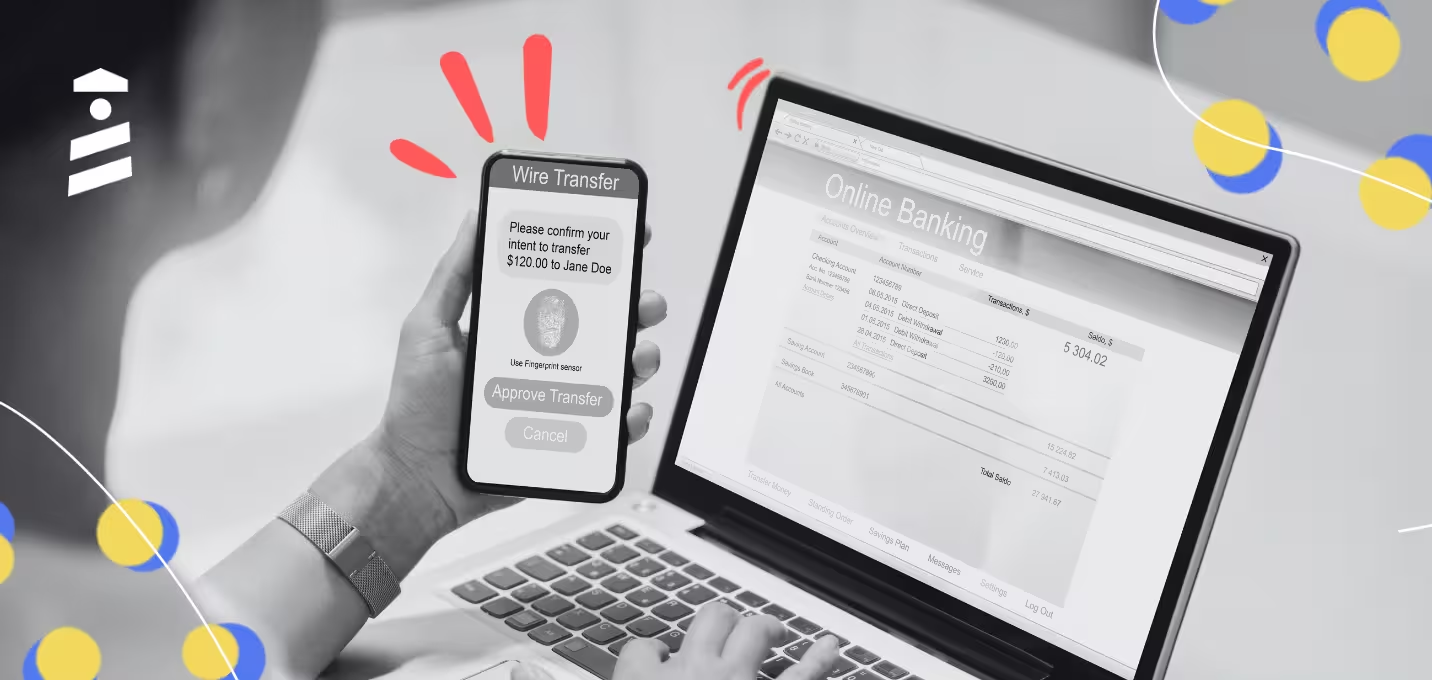

Truth be told: There is an ocean of SaaS marketing metrics to keep an eye on. But even with the necessary resources and tools, it can be overwhelming to track them all.
It is important to decide what metrics you must track and what you can let go of. The rule of 40 can give you an idea about what metrics you need to prioritize. The rule of 40 states that a SaaS company's viability depends on the combination of its growth rate and profit margin to be greater than 40%. If the company can exceed this number, it is considered "healthy."
Therefore, sustaining your business means shifting your focus from vanity metrics that are not useful to metrics that will give you insight into your service, marketing strategy, customer experience, and branding.
Naturally, you invest money to see some return and improve your acquisition and retention rate. This article will cover 7 top SaaS marketing metrics to help you set better goals this quarter.
Here's a list of metrics we will cover:
- Churn
- Annual Recurring Revenue (ARR) / Monthly Recurring Revenue (MRR)
- Activation
- Customer Acquisition Cost (CAC)
- Customer Lifetime Value (CLV or LTV)
- The Net Promoter Score (NPR)
- Lead Velocity Rate
Let's begin, shall we?
1- Churn
Churn in SaaS businesses is the percentage of customers who cancel their subscriptions in a certain period of time. It is the mutual enemy that all SaaS companies share. The industry benchmark for churn rate is around 5-7%.
As a SaaS owner or product manager, you should focus on tracking two types of churn rates: customer churn and revenue churn rate.
Customer churn is the number of customers who stopped using your service during a set period. To measure this key metric, you need to use the customer churn rate.
For a typical SaaS business, one of the ways to measure customer churn rate is to take the number of customers you lost at any given time and divide it by the number of customers you had at the beginning of that period.

Revenue churn is defined as the loss of revenue at any given time. The higher it gets, the faster you lose your customers. If your business offers different plans with different costs, the customer value will not be equal. Let's say one of your current customers pays $80 per month while the other four pay $80 combined.
If you only calculate the customer churn rate, you will be confused about where your money went because your customer retention rate seems okay.
To avoid such confusion, you can calculate revenue churn by dividing the net revenue lost from the existing number of customers in a given period by the total revenue at the beginning of that period. It looks like this:

Although some believe that tracking churn is not crucial for SaaS startups because they have a small pool of customers, and those who leave can be replaced easily, that is not true.
If you ignore churn as a startup, it is more likely that your service will fail to show its value to potential qualified leads or customers as your business grows. Tracking churn helps demonstrate your strengths to customers as a SaaS company and prove your superiority over your competitors.
Therefore, churn is one of the essential metrics that you should be tracking regularly because it determines whether your company sinks or stays afloat. Once you focus on minimizing your churn rate, you can also adapt your marketing strategy to ensure growth, revenue retention, and customer retention.
2- Monthly Recurring Revenue (MRR) / Annual Recurring Revenue (ARR)
Monthly Recurring Revenue (MRR) is about how much money your current customers bring each month. Annual recurring revenue (ARR) is your monthly recurring revenue multiplied by 12. As a SaaS business, you need to be mindful of monitoring MRR and ARR to evaluate your relationship with your customers.
Annual recurring revenue (ARR) and monthly recurring revenue (MRR) are also good methods to understand whether your service resonates with customers.
According to a recent study, 62% of customers are more willing to pay more for a good customer experience. Therefore, if you provide more value with your service, the customers are more likely to continue paying you each month or year, which will increase your revenue retention.
If your MRR and ARR are showing a growth trend, your business will attract more investors too, so how do you measure MRR or ARR?
To calculate MRR, you can multiply your average revenue per user by the number of monthly customers. When you multiply your MRR by 12, you get your ARR.
3- Activation
Activation, or Rate of Activation, refers to the percentage of customers who switch from a free trial or freemium plan to a paid one within a certain time period. This metric depends more on the subscriber because it coincides with their "Aha!" moment when they understand and appreciate the value of your service for the first time by themselves.
However, it would be best if you still facilitated user needs to accelerate the activation process so that the user can use your service more thoroughly and quickly. Streamlining and optimizing your onboarding process by creating guides, checklists, etc., will reduce the time the activation occurs; and boost your conversion rate.
For example, UserGuiding helps companies and entrepreneurs create guides, checklists, and hotspots so that users can complete their onboarding process with minimum effort/struggle and maximum efficiency.

Customers don't like challenges. They want straightforward and trouble-free instructions. They want to take immediate action with your service.
That is why, if you provide them with a successful onboarding process that demonstrates the benefits of your service, customers will be more inclined to stay, achieving their first key point and turning into long-term customers.
To measure the rate of activation, take the number of customers who passed the activation point and divide it by the number of users who signed up for your service. After that, multiply it by 100 to get a percentage.

4- Customer Acquisition Cost (CAC)
Customer Acquisition Cost (CAC) is how much money you spend to acquire a new customer. It includes the cost of marketing activities and the sales team. SaaS marketing metrics usually track CAC in relation to customer lifetime value (CLV or LTV); however, we are going to separate them in this article and make it easy to comprehend, but when you are analyzing, you need to consider CAC and CLV together.
You can measure CAC, although it looks complicated; divide the total amount spent on sales and marketing over a month by the number of clients you acquired during the same period. The money spend includes employers' salaries as well as other relevant costs. And there you go! You have your CAC.
5- Customer Lifetime Value (CLV or LTV)
Customer Lifetime Value equals the entire revenue you get from a single customer over the course of their entire subscription period. For your business to stay "healthy" (or profitable), the lifetime value of every single customer must exceed CAC. The industry standard for SaaS businesses is around 3:1, meaning your customer lifetime value should be three times more than the customer acquisition cost.
SaaS or other subscription-based businesses should recover CAC within a year to stay healthy. In other words, recovering your investments within 12 months or less indicates that your growth rate is rising.
To calculate CLV, you need to find the average customer lifespan and multiply that by revenue per customer. Then you need to extract your performance and maintenance costs, such as marketing expenses.
CLV:CAC ratio tells you whether your marketing performance and sales process are successful. If you are spending too much to acquire a customer and seeing less return, or if you are spending too little and missing out on potential qualified leads, then you need to reevaluate your strategies with your teams.
If you can retain customers for a longer period, you will have a better customer lifespan and adding new customers on top of existing loyal ones will create revenue growth.
You can also reduce your acquisition cost and marketing spend by adapting your content marketing strategy. SEO-friendly evergreen content will rank your website higher in the organic search engine searches, driving traffic and high click-through rate, and potential qualified leads.
6- The Net Promoter Score (NPS)
The Net Promoter Score (NPS) is a metric used to measure your customer's satisfaction level and indicates how much value of your product is realized by the customer. By asking them, "How likely are you to recommend our product to a friend or colleague?" you can analyze whether you need to enhance your service and future campaigns according to their comments.
Although the numerical scores vary across different channels, it is generally accepted that a higher NPS score means you have a healthy relationship with your customers. You are more likely to experience churn and low conversion rates with a low NPS score.

You can classify your customers into three categories based on their answers: Promoters, Passives, and Detractors.
Promoters
Promoters give you a score between 9 to 10 and they are the most avid group of users who regularly use your service. They will recommend your company's products to other potential customers and buy your products in the future.
Passives
Passives give you a score of 7 or 8. They still enjoy your service, but they are not enthusiastic enough about it to recommend to others. They might switch to your competitor in the future.
Detractors
They give you a score between 0 and 6. This group is the most likely to damage your brand's image. They were not satisfied with your service at all and may spread negative word-of-mouth.
NPS is one of the crucial metrics a SaaS marketing team can use, and it can improve your customer base's overall experience with your service and gain insight into the future growth of your company.
However, NPS alone is not sufficient to provide full insight into your brand. That is why it is better to ask further questions to the customers.
7- Lead Velocity Rate (LVR)
Lead Velocity Rate (LVR) measures whether your company's marketing efforts result in growth. It is the percentage of growth in the number of your leads on a monthly basis and helps you determine long-term growth potential. Based on your velocity rate, you can assess and plan more accurately.
You can measure the lead velocity rate with an easy formula:

Final Words
The world moves on, and so does the SaaS marketing world. If you want to ensure that your company stays profitable, you need to adapt and monitor the changes in the industry.
Although keeping up with the ever-changing nature of SaaS is hard, plenty of marketing metrics can reduce the time you need to implement the newest changes into your game plan. These metrics are:
- Churn
- Annual Recurring Revenue (ARR) / Monthly Recurring Revenue (MRR)
- Activation
- Customer Acquisition Cost (CAC)
- Customer Lifetime Value (CLV or LTV)
- The Net Promoter Score (NPR)
- Lead Velocity Rate
Yes, we know that there is much data to be studied, analyzed, interpreted, and implemented for your brand. However, they are compulsory for your company's future success, so do not sleep on them and start tracking now!
Frequently Asked Questions
What is the most important SaaS metric?
Even though we covered 7 important metrics your SaaS business should be tracking to set better goals this quarter, the most important key metric is churn. Your churn rate determines whether your company is healthy or not. By tracking and implementing changes to reduce churn, you will be more likely to show the strength of your service to potential customers. In addition, you will prove that your product is superior to your competitor's.
What are the three most common marketing metrics?
The three most common SaaS marketing metrics are Annual Recurring Revenue / Monthly Recurring Revenue, Customer Acquisition Cost (CAC), and Customer Lifetime Value. These marketing metrics assist you in defining your marketing campaign and aim to inspire growth.

















.svg)
.svg)
.svg)
.svg)
.svg)

.svg)
.svg)












.svg)
.svg)




.png)
















